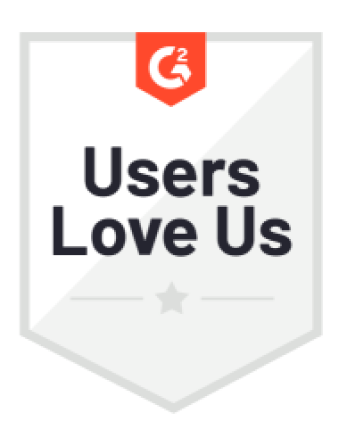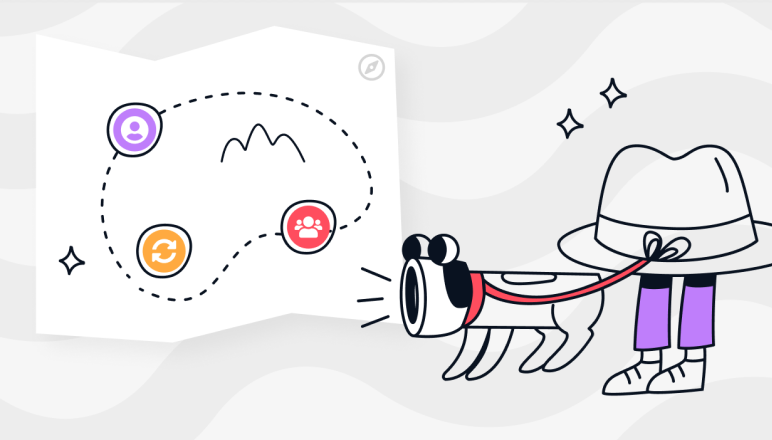Mastering R for Data Analytics
Looking to elevate your data analytics game? Dive into our guide on mastering R for data analytics.
Data analytics is a rapidly growing field that requires robust tools and methods to extract insights from complex datasets. One such tool that has gained immense popularity in recent years is R. In this comprehensive guide, we will delve into the world of R and explore how it can be mastered for effective data analytics.
Understanding the Basics of R
What is R?
R is a powerful programming language and software environment for statistical computing and graphics. It provides a wide range of functions and packages that are specifically designed for data analysis. Whether you are a beginner or an experienced data analyst, R offers a flexible and versatile platform to work with various datasets.
Why Use R for Data Analytics?
There are several reasons why R is a preferred choice for data analytics professionals. Firstly, R is open-source and freely available, making it accessible to anyone. Moreover, R has a vast and active community of users and developers, which means that there is a wealth of resources and support available.
R also boasts a wide range of packages and libraries that provide specialized functionalities for data manipulation, visualization, and modeling. These packages, such as ggplot2 and dplyr, allow analysts to execute complex data analytics tasks with ease.
Furthermore, R's syntax is straightforward and easy to learn, making it suitable for both beginners and experts alike. Its interactive nature also encourages exploratory data analysis and iterative development, enabling analysts to quickly prototype and refine their analyses.
Installing and Setting Up R
Before diving into R programming, you need to install and set up the R environment on your machine. Thankfully, the installation process is simple and can be completed in a few steps.
Start by downloading the latest version of R from the official website. Once the installation file is downloaded, run it and follow the on-screen instructions. During installation, you may be prompted to select additional packages or customize the installation path.
After installing R, you can launch the R console, which provides a command-line interface for executing R code. Alternatively, you can opt for an integrated development environment (IDE) such as RStudio, which offers a more user-friendly and feature-rich environment for R programming.
Once you have installed R and set up the environment, it's important to familiarize yourself with the various features and capabilities it offers. R provides a comprehensive set of tools for data manipulation, exploration, and visualization. For example, you can use the dplyr package to perform data wrangling tasks such as filtering, sorting, and summarizing data. Additionally, the ggplot2 package allows you to create stunning and informative visualizations to gain insights from your data.
Furthermore, R supports a wide range of statistical modeling techniques, making it a popular choice for data analysts and researchers. You can use packages like stats and caret to perform regression analysis, classification, clustering, and more. These packages provide a rich set of functions and algorithms to help you build and evaluate predictive models.
Another advantage of using R for data analytics is its integration with other programming languages and tools. R can easily interface with languages like Python and SQL, allowing you to leverage their capabilities and combine them with R's statistical computing power. This flexibility enables you to seamlessly integrate R into your existing data analysis workflows and take advantage of the best features from different tools.
In conclusion, R is a versatile and powerful programming language for data analytics. Its open-source nature, extensive package ecosystem, and user-friendly syntax make it an ideal choice for both beginners and experienced analysts. By installing and setting up R, you can unlock a world of possibilities for data manipulation, visualization, and modeling, empowering you to extract valuable insights from your datasets.
Diving into R Programming
Understanding R Syntax
Every programming language has its unique syntax, and R is no exception. Understanding the basic building blocks of R syntax is crucial for writing efficient and readable code.
At its core, R is a vector-oriented language, which means that many operations are performed on entire vectors or matrices rather than individual elements. R also supports various data types, including numeric, character, logical, and more.
As in most programming languages, R has control structures such as if-else statements and for loops that allow for program flow control. Being familiar with these control structures is essential for writing conditional and iterative code in R.
Variables and Data Types in R
In R, variables are used to store and manipulate data. When creating a variable, you need to assign a value to it using the assignment operator "<-". For example, x <- 5 assigns the value 5 to the variable x.
R supports various data types, including numeric, character, logical, and more. Numeric data types represent numerical values, while character data types store text strings. Logical data types can hold either TRUE or FALSE values, which are used for logical operations.
Furthermore, R provides powerful data structures such as vectors, lists, matrices, and data frames, which allow for efficient data organization and manipulation.
Control Structures in R
Control structures in R enable you to manage the flow of your program based on certain conditions or iterate over a sequence of values. The if-else statement, for instance, allows you to perform different actions depending on a given condition.
R also provides different types of loops, including the for loop and while loop, which allow you to iterate over a sequence of values or execute a block of code until a certain condition is met.
Understanding how to effectively use control structures in R is key to developing complex data analytics workflows and algorithms.
Data Manipulation in R
Importing and Exporting Data
Before you can analyze data in R, you need to import it into your environment. R offers various functions and packages that allow you to read data from different file formats, such as CSV, Excel, and databases.
Once you have imported the data, you can leverage R's data manipulation functions to clean and preprocess it. These functions, such as filtering, merging, and reshaping, enable you to transform and reshape the data to suit your analytical needs.
When your analysis is complete, you can export the results back to various file formats for further analysis or sharing with others.
Cleaning and Preprocessing Data
Data cleaning and preprocessing are essential steps in any data analytics project. In R, you can use functions from packages like dplyr and tidyr to handle missing values, remove duplicates, standardize variables, and perform other data cleaning tasks.
R also provides extensive functionality for data transformations, such as scaling, normalization, and encoding categorical variables. These transformations help ensure the data is in the right format and ready for analysis.
By employing these cleaning and preprocessing techniques, you can improve the quality and reliability of your analysis results.
Data Transformation Techniques
Once the data is cleaned and preprocessed, you may need to further transform it to extract meaningful insights. R offers a wide range of data transformation techniques, such as aggregations, pivot tables, and feature engineering.
Aggregations allow you to summarize data, compute descriptive statistics, and create meaningful visualizations. Pivot tables enable you to reshape data, presenting it in a more structured and understandable format. Feature engineering involves creating new variables or combining existing ones to enhance the predictive power of your models.
Being proficient in these data transformation techniques enables you to uncover patterns and relationships hidden within your dataset.
Data Visualization with R
Introduction to ggplot2
Data visualization is a powerful way to explore, analyze, and communicate insights from data. R provides several packages for creating visualizations, but one of the most popular is ggplot2.
ggplot2 is based on the grammar of graphics, which allows you to build visualizations by combining layers of data, aesthetics, and geometric objects. It offers a consistent and intuitive syntax for creating a wide range of plots, from simple line charts to complex multi-faceted visualizations.
With ggplot2, you have full control over customization options, such as colors, axes, labels, and themes, ensuring your visualizations effectively convey the intended message.
Creating Basic Plots
Getting started with data visualization in R is easy. You can create basic plots, such as scatter plots, bar charts, and histograms, using simple functions provided by ggplot2.
These functions allow you to map variables to different aesthetics, such as x and y axis, color, size, and shape. By doing so, you can uncover patterns and relationships within your data.
Furthermore, ggplot2 supports faceting, which allows you to split your data into multiple panels based on a categorical variable. This feature is particularly useful when comparing subsets of data or analyzing trends across different groups.
Advanced Data Visualization Techniques
Once you are comfortable with basic plots, you can explore advanced data visualization techniques in R. With ggplot2, you can create complex visualizations, such as heatmaps, treemaps, and interactive plots.
Additionally, you can use ggplot2's powerful layering system to combine multiple visual elements, such as points, lines, and areas, into a single plot. This layering capability allows you to convey multiple dimensions of information in a concise and visually appealing manner.
By mastering these advanced data visualization techniques, you can create compelling visualizations that engage and inform your audience.
In conclusion, mastering R for data analytics opens a world of possibilities for data analysts. From understanding the basics of R programming to manipulating and visualizing data, this comprehensive guide has equipped you with the necessary knowledge to leverage R's full potential. Whether you are a beginner or an experienced practitioner, R provides the tools you need to analyze and extract insights from complex datasets with ease. So, embrace R and embark on your journey to becoming a proficient data analytics professional.As you embark on your journey to master R for data analytics, CastorDoc stands ready to elevate your experience. Embrace the power of the most reliable AI Agent for Analytics, designed to empower your business teams with immediate, trustworthy data insights for strategic decision-making. With CastorDoc, you can enjoy the benefits of self-service analytics, overcome data literacy challenges, and fully activate the ROI of your data stack. Experience the freedom and confidence to leverage data with ease, while alleviating the workload on your data professionals. Try CastorDoc today and transform the way your business interacts with data.
You might also like
Get in Touch to Learn More



“[I like] The easy to use interface and the speed of finding the relevant assets that you're looking for in your database. I also really enjoy the score given to each table, [which] lets you prioritize the results of your queries by how often certain data is used.” - Michal P., Head of Data




.png)
%202.png)

%202.png)

%202.png)
%202.png)
%202.png)

%202.png)


%202.png)

%202.png)


.png)

